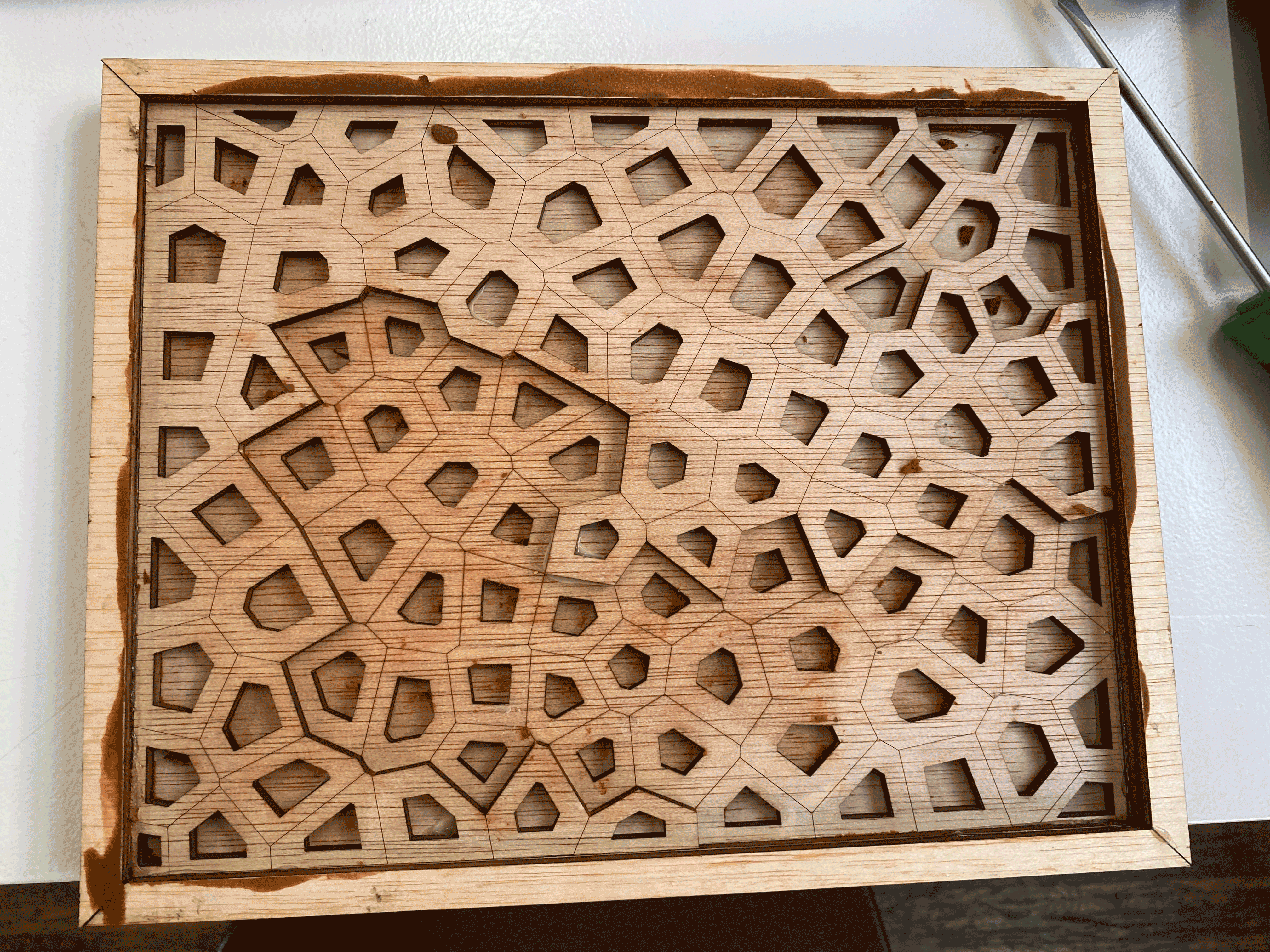DPD Module 1 🛠️
17/01/2024 - 18/01/2024
As part of the program, we’ve been taking the seminar Digital Design for Prototyping. Based on the program FabAcademy, DPD teaches us how the fablab’s machines work and the different possibilities they offer to prototype. Also, the seminar takes modules from the fabricademy program to teach us the bases of biomaterials.
2D Manufacturing
Laser cutting
This process uses thermal energy and heat, to separate or cut the parts of a material. A beam of concentrated light called laser is used to raise the temperature of the surface until it melts or vaporizes. After penetrating the surface of the material, the cutting process begins, guiding the beam across the surface until the desired shape or piece is obtained. This guiding will be possible thanks to the use of CAM (Computer Aided Manufacturing) Technology, that will control the machine by using g-code, defining the movement of the machine.
Within this type of process there are three differentiated technologies or procedures that group the different industrial applications
- Burning or Reactive Process: during the cutting process, oxygen is used at high pressures as a support gas, so the material reacts and consequently oxidizes during the process. This reaction produces energy that helps the laser to be more powerful and therefore the cut is deeper. It is generally used with iron or large thicknesses of sheet metal.
- Fusion process: in this case nitrogen is used as a carrier gas by means of blowing so that it is more powerful. blowing so that it is easier to remove the material and less energy is used in cutting. in the cutting process. In general this process is used with materials that melt easily or small thicknesses. or small thicknesses.
- Sublimation process: by means of a high intensity light beam, the material is directly evaporated or sublimated. evaporates or sublimates directly, so that it can be cut easily. This type of This type of process is used for non-metallic materials.
By means of these three main processes, most of the geometries designed in 2D are obtained to be cut. In addition, the advantages of this type of process are more than evident, the high precision and versatility allow obtaining parts in the most efficient way possible with the use of the least material, although this depends on the optimization when placing the parts on the board.
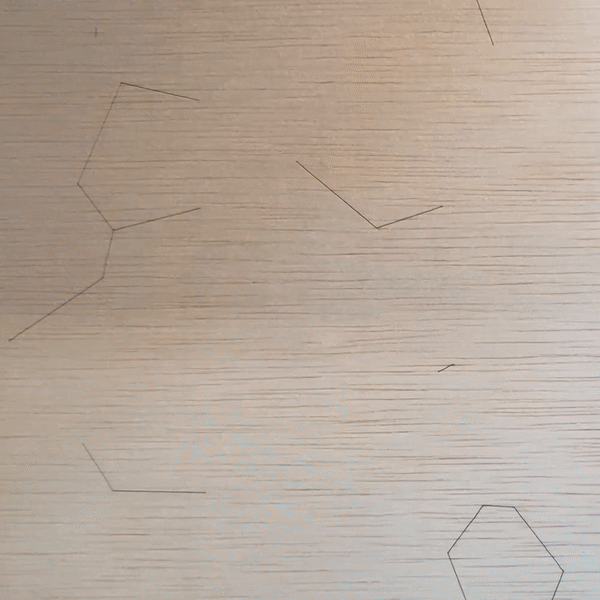
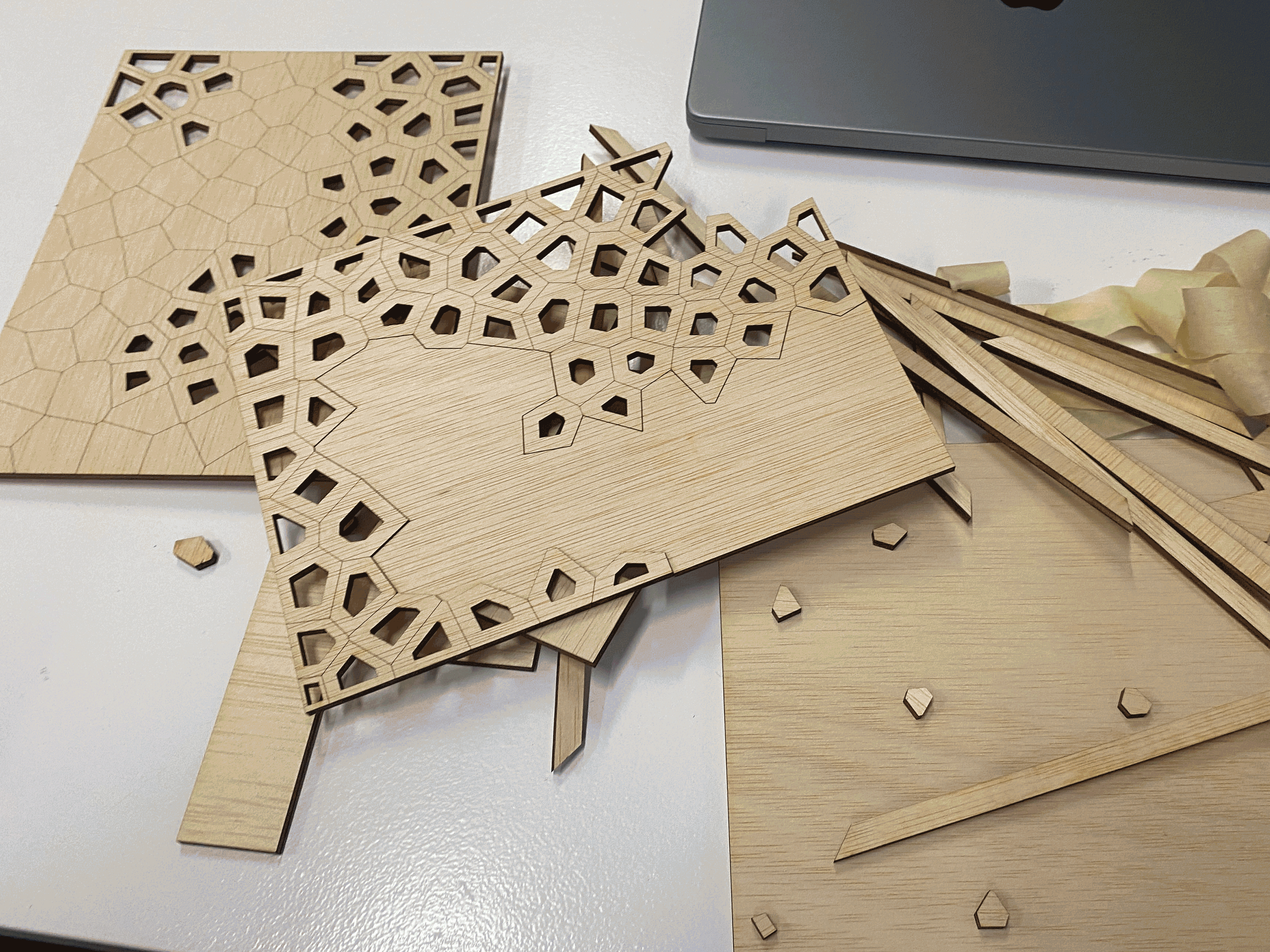
Intro to Biomaterials
Basic Bioplastics recipes
In the realm of digital fabrication, bioplastics integrate into digital fabrication processes like 3D printing, CNC machining, and laser cutting. This opens up a world of opportunities for creators, makers and designers like us to bring new designs to life while researching in leaving a lighter footprint on the planet. Unlike conventional plastics, bioplastics can be crafted from renewable sources like corn starch, sugarcane, agar... Making them an eco-friendly alternative with an incredible amount of posibilities.
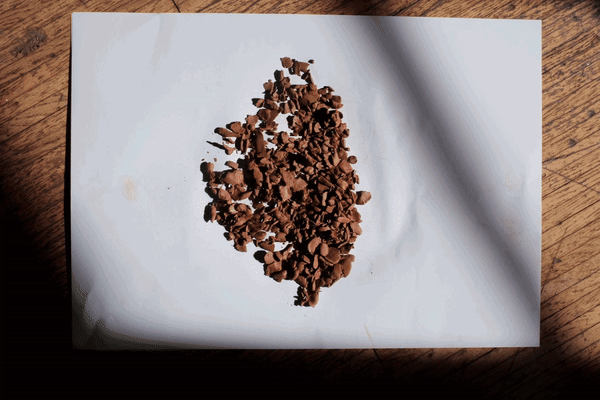
Deliverable
Challenge module 1
here👈 For this first challenge we had to combine the previous knowledge on the basis of bio-materials and the laser cutting machine to create something. Marius and myself, decided to create a parametric mold with the laser cutting machine and then pour the biomaterial created. To make the parametric mold we used Rhino+Grasshopper. For it’s shape, as we wanted to create a clay biomaterial from the biomaterial cookbook, we thought using a Moroni pattern will be ideal as dry soil usually get’s shaped following this mathematical operations. With a simple grasshopper script (Grasshopper file here👈) we managed to define the different seed, and size of the different cells and also with a pull point function we managed to make the inset shapes more dynamic by making the distance of the inset vary depending on the closeness to any line created in rhino.
For the final result, we created different layers of the pattern, and created walls and a base for the mold. (You will find the final file here👈) As I said before, our idea for the material was based on clay to follow a narrative for the exercise with the voronoi mold. Using the open source material cookbook, we based our bioplastic on the Agar Agar + Clay recipe. We decided to use this one because of the plasticizer. By using a plasticizer like agar agar will help the demolding because the main problem with laser cutting molds is the angles to demold. As we can only design a 2D shape that will be cutted, we can’t change the z unit shape so it will always be a straight cut. Also, some of the recipe had to be changed because we only had available wet clay and the recipe was with dry one, as the wet one already had water in it we had to change the proportions and experiment a bit with the material in order to get to the ideal material consistency.

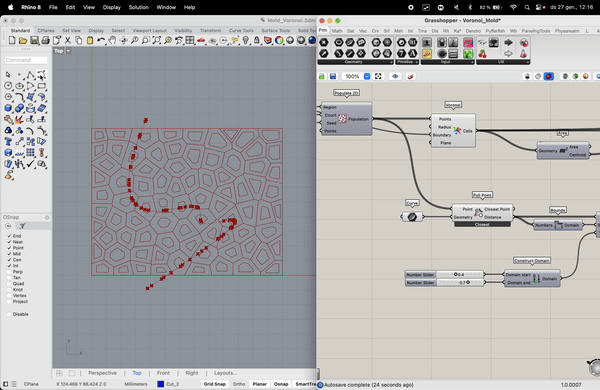
Final result module 1
